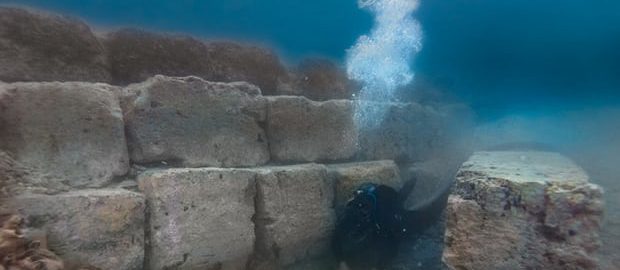Underwater discoveries at Lechaeum, the ancient port of Corinth, shed new light on ancient Roman engineering.
Lechaeum was one of the two ports of Corinth that connected the city with the Mediterranean area. Lechaeum was located in the Gulf of Corinth, and Kenchreai in the Isthmus of Corinth in the Aegean Sea. The city and its ports were a significant sea power in ancient times. Lechaion was also the main military port for the Corinthians. However, with the destruction of the city in 146 BCE, and the conquest of Greece by the Romans, the political importance of Corinth diminished.
The city was heavily rebuilt in 44 BCE by Julius Caesar. As it turned out, the resulting Caesar colony soon became one of the strongest urban and port centres in the eastern Mediterranean. The ships landing in Corinth were laden with luxury goods.
At present, visitors to the Corinthian coast can admire the foundations of the two great structures of Lechaion that made up the outer harbour. They are now under a thick layer of sediment that has accumulated over the centuries. Scientists are conducting research and archaeological works to reveal the secrets of a forgotten port.
According to specialists, the port of Corinth has changed over the years. In the 1st century CE, Lechaeum had an external port with an area of 40 thousand. square meters and an internal port covering approx. 24 thousand. square meters. The pool and the entrance to the port were marked out by huge moles, made of large stones, each weighing 5 tons. One of such structure was 45 meters long and 18 wide. The preserved coins prove that the port also had its own lighthouse and a structure in the middle of the port basin that could have a religious or control function. However, the aforementioned structure on the island was destroyed as a result of an earthquake that occurred around 50-125 CE
By the 6th century, a new swimming pool with an area of about 40 thousand square meters was built. square meters, which served the needs of the Byzantine Empire. In the meantime, another earthquake took place that raised the area of Lechaion by more than a meter.
The great preserved stone structures prove how much engineering knowledge the Romans had. Wooden caissons and piles, which served as the foundation, have survived to this day. In addition to construction aspects, scientists found remains of ceramics, in which goods were transported from Italy, Tunisia and Turkey.








